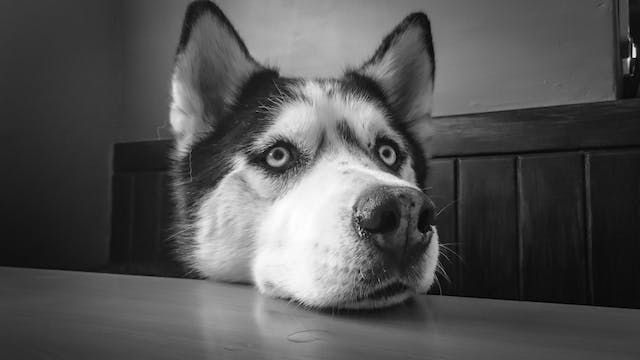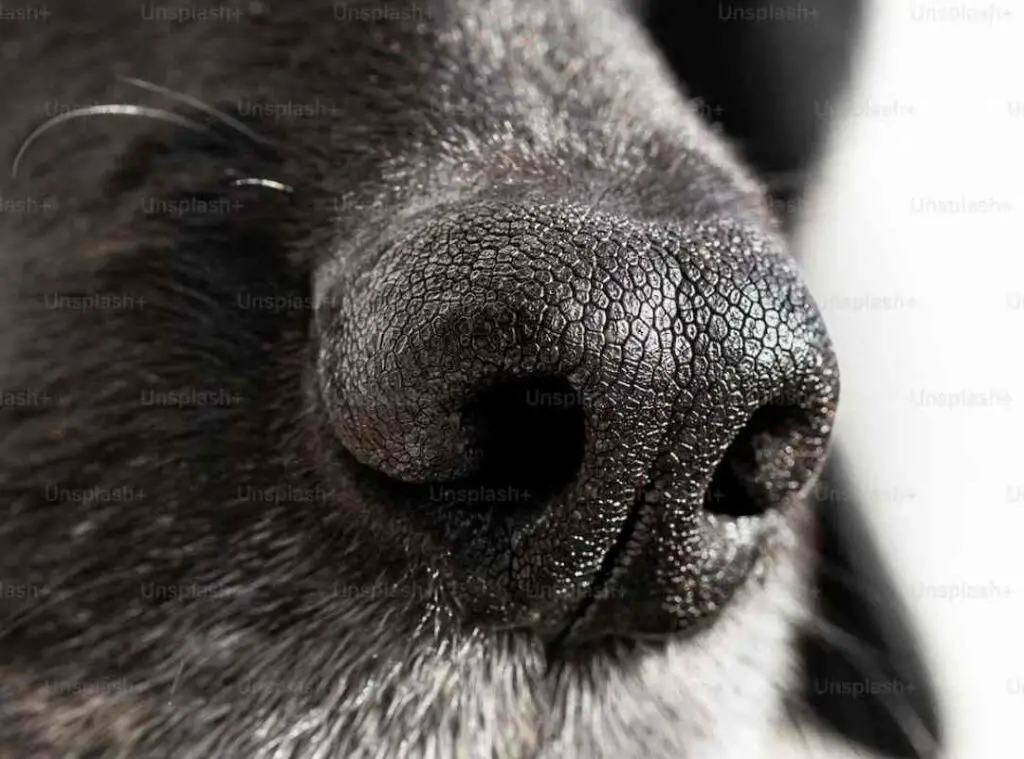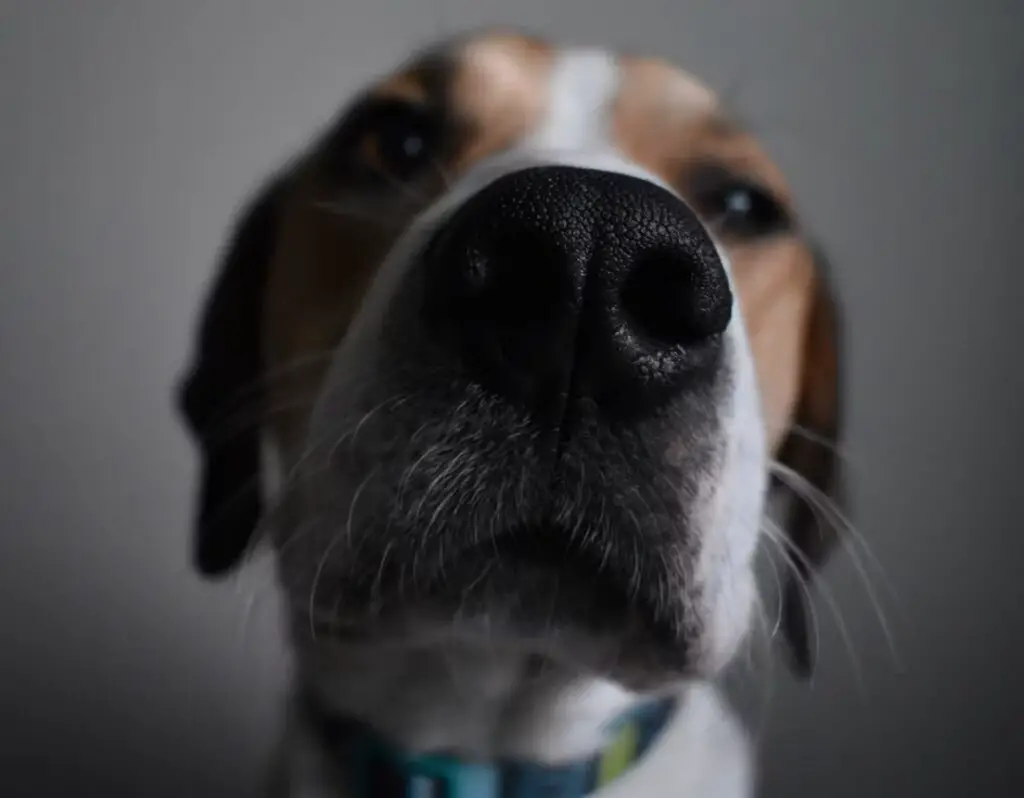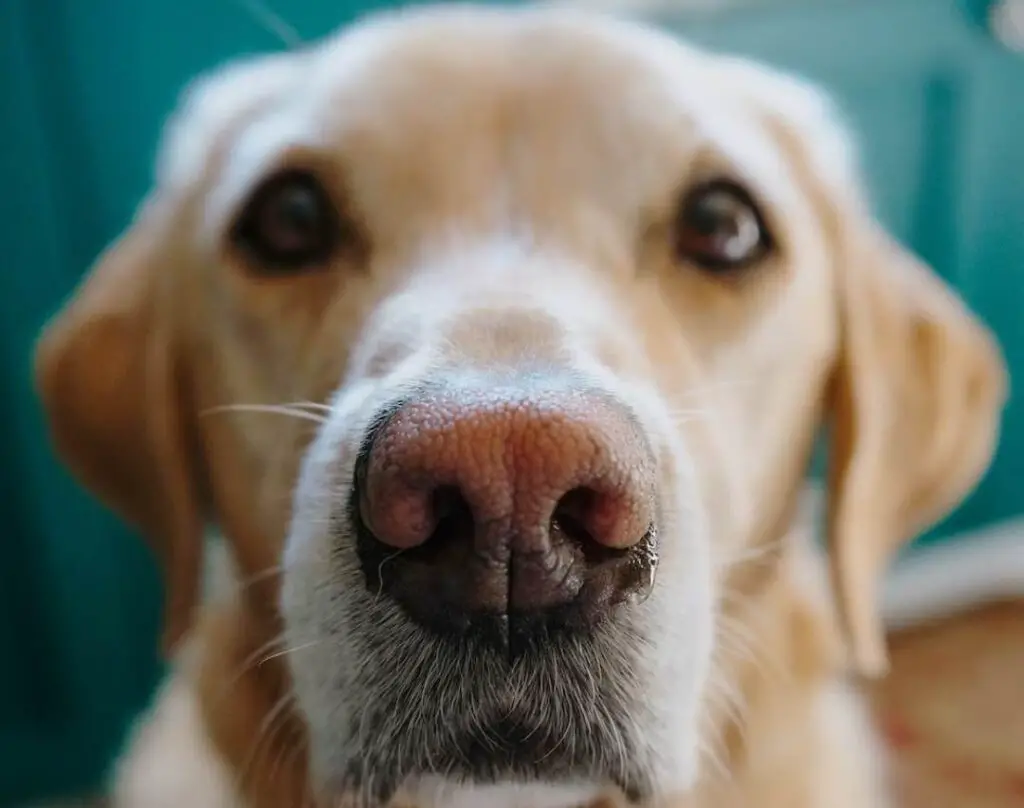How to Deal With Cracked Dog Nose

We all want our furry friends to be happy and healthy, right? Well, today I want to talk about a common concern that many dog owners face: cracked dog noses.
Don’t worry, though! In this article, we’ll explore the causes of cracked noses and share some practical tips on how to deal with this issue.
So, let’s dive in and give your pup’s sniffer the love and care it deserves!
What is a Cracked Dog Nose
Cracked dog nose, also known as dog nose hyperkeratosis, is a condition caused by an overgrowth of skin cells (keratin) on the surface of a dog’s nose.
This can make the nose look rough, thick, and even crusty or cracked due to the excess keratin.
Causes of Cracked Dog Nose

Here are some of the most common causes of cracked dog noses:
1. Dryness
Dogs can experience dryness in their noses due to various factors. Low humidity levels in the environment, especially during winter months or in arid climates, can lead to dry skin.
Additionally, exposure to harsh weather conditions such as cold winds or excessive sun can also contribute to dryness and cracking.
2. Sunburn
Dogs with light-colored or thin fur on their noses are more prone to sunburn. The skin on their noses is sensitive and can easily get sunburned when exposed to prolonged periods of sunlight. Sunburned noses may become dry, peel, and eventually crack.
3. Allergies
Allergic reactions in dogs can manifest in different ways, including dry and cracked skin.
Allergies in dogs can be caused by various factors such as certain foods, environmental allergens like pollen or dust mites, or even materials the dog comes into contact with, such as certain cleaning products or plastics.
4. Nutritional deficiencies
A balanced diet is crucial for a dog’s overall health, including the condition of their skin.
Nutritional deficiencies, particularly a lack of essential fatty acids or vitamins, can contribute to dryness and cracking of the nose.
Ensuring that your dog’s diet is well-rounded and meets their nutritional needs is important for maintaining healthy skin.
5. Nasal Hyperkeratosis
Nasal hyperkeratosis is a condition characterized by the excessive growth of keratin, a protein found in the skin.
It causes the nose to become thickened, dry and cracked. Breeds such as Bulldogs, Boxers, and other brachycephalic breeds are more prone to this condition.
Regular moisturizing and proper veterinary care are typically required to manage nasal hyperkeratosis.
6. Infections
Bacterial or fungal infections can affect a dog’s nose and lead to dryness, inflammation, and cracking.
These infections can be caused by underlying health issues, immune system deficiencies, or exposure to pathogens.
Symptoms may include discharge, redness, swelling, and discomfort.
Treatment typically involves addressing the underlying infection with appropriate medication prescribed by a veterinarian.
7. Trauma or injuries
Dogs can accidentally injure their noses while playing, exploring, or engaging in rough activities.
Cuts, scrapes, burns, or other forms of trauma to the nose can result in dryness and cracking.
It’s important to keep an eye on your dog’s activities and surroundings to prevent such injuries.
If an injury occurs, cleaning the wound and consulting with a veterinarian for appropriate care is recommended.
8. Lick dermatitis
Some dogs have a habit of excessively licking their noses, which can contribute to dryness and cracking.
Constant licking can strip away the natural oils that keep the skin moisturized, leading to irritation and dryness.
Identifying and addressing the underlying cause of the excessive licking, such as boredom or anxiety, is important.
Additionally, using deterrents or protective measures, like an Elizabethan collar, can help break the licking habit and allow the nose to heal.
Symptoms of Cracked Dog Nose

Cracked dog nose, also known as nasal hyperkeratosis, is a common condition that affects many canine companions.
It is characterized by the thickening and cracking of the skin on a dog’s nose.
The symptoms of this condition include dryness, flakiness, and the formation of rough, scaly patches on the nose.
In some cases, the cracks may bleed or become infected, leading to discomfort and pain for the dog.
Other signs to look out for include a loss of pigmentation or color on the nose, as well as a decrease in the dog’s sense of smell.
If you notice any of these symptoms, it’s important to consult with a veterinarian for a proper diagnosis and appropriate treatment.
Treatment of a Cracked Dog Nose

So, treating a cracked dog’s nose involves keeping it clean and applying a pet-safe moisturizing balm to prevent further cracking.
You’ll want to make sure your pup isn’t rubbing or scratching their nose, so a comfy cone might be necessary.
Also, consider adjusting their diet to include more omega-3 fatty acids for skin health.
And of course, a visit to the vet is always a good idea for any persistent or concerning issues.
Let’s break it down further…
Here’s the step-by-step guide to the treatment of a cracked dog nose:
Step 1: Identify the Cause
A dry and cracked nose in dogs can be caused by various factors such as hyperkeratosis, autoimmune diseases, infections, and dry eye.
To identify the cause, examine your dog’s nose and look for any signs of inflammation, discharge, or lesions.
If you notice any of these symptoms, consult your veterinarian for further guidance and treatment options.
Step 2: Assess the Severity of the Cracked Nose
Take a close look at your dog’s nose to determine the severity of the crack. If it’s a minor crack with no bleeding or signs of infection, you may be able to treat it at home.
However, if the crack is deep, bleeding, or accompanied by other symptoms like swelling or discharge, it’s important to consult a veterinarian for proper evaluation and treatment.
Step 3: Keep the Area Clean
Cleanliness is crucial when treating a cracked dog nose.
Gently wipe the area around the crack with a clean, damp cloth to remove any dirt or debris.
Avoid using harsh soaps or disinfectants, as they can further irritate the skin.
If there are crusts or dried discharge around the crack, you can use a saline solution (a mixture of salt and warm water) to help soften and remove them before gently wiping the area.
Step 4: Apply a Pet-Safe Moisturizer or Balm
To help heal the crack and prevent further drying, apply a pet-safe moisturizer or nasal balm to the affected area.
Look for products specifically formulated for dogs, as human products may contain ingredients that are harmful to pets.
These products often contain soothing and moisturizing ingredients such as natural oils, beeswax, or shea butter.
Apply a thin layer of the balm according to the manufacturer’s instructions, taking care not to apply too much or cause discomfort to your dog. Some products may need to be reapplied several times a day.
Step 5: Protect the Nose from Irritants
Try to identify and minimize any factors that may be causing further irritation to your dog’s nose.
This can include avoiding exposure to extreme temperatures, such as keeping your dog indoors during very hot or cold weather.
Additionally, keep your dog away from irritants like chemical cleaners, strong odors, or irritants in the environment.
Consider using pet-friendly cleaning products in your home and avoiding areas where chemicals have recently been used.
It’s also important to prevent your dog from rubbing or scratching their nose excessively, as this can further aggravate the cracked skin.
Step 6: Ensure Proper Hydration
Proper hydration is important for overall skin health, including the nose.
Make sure your dog has access to fresh water at all times, and encourage them to drink regularly.
If your dog doesn’t drink much water voluntarily, consider speaking to your vet about alternative ways to ensure they are adequately hydrated.
Proper hydration helps keep the skin moisturized and can aid in the healing process.
Step 7: Monitor for Improvement or Worsening
Keep a close eye on your dog’s cracked nose as you proceed with the treatment.
Monitor for any signs of improvement, such as a decrease in redness or dryness, and ensure that your dog is not showing any signs of discomfort.
Conversely, be vigilant for any signs of worsening, such as increased redness, swelling, bleeding, discharge, or if your dog shows signs of pain or discomfort.
If you notice any negative changes or if the crack doesn’t improve after several days of treatment, it’s crucial to reach out to a veterinarian for further guidance.
Step 8: Consult a Veterinarian if Necessary
If the crack doesn’t heal or if it worsens despite your efforts, it’s best to consult a veterinarian.
They will be able to assess the situation more thoroughly, provide appropriate treatment options, and address any underlying health conditions that may be contributing to the cracked nose.
They may recommend additional topical treatments, prescribe medications, or perform further tests to determine the cause of the crack if necessary.
Remember, while these steps can help in the treatment of minor cracks, it’s always important to seek professional veterinary advice if you’re unsure or if the condition doesn’t improve.
Your veterinarian can provide tailored guidance based on your dog’s specific needs.
Read more about important dog care tips.
How to Prevent a Cracked Dog Nose
To prevent cracked dog noses, there are several simple steps you can take.
First, ensure your dog stays hydrated by providing fresh water at all times. Hydration helps maintain the moisture levels in their nose.
Second, avoid exposing your dog’s nose to extreme temperatures, such as harsh sunlight or chilly winds, which can dry out the skin.
Third, regularly apply a pet-safe moisturizing balm or ointment to their nose to keep it supple and prevent cracking.
Fourth, provide a balanced diet rich in essential fatty acids, as these promote healthy skin and prevent dryness.
Finally, avoid using harsh chemicals or irritants near your dog’s nose, such as strong cleaning products or perfumes.
FAQs
Why is my dog’s nose cracked?
Various factors, including dry air, exposure to the sun, allergies, or underlying health issues can cause a cracked dog nose. It’s important to consult a veterinarian to determine the cause and appropriate treatment.
How can I help soothe my dog’s cracked nose?
You can apply a thin layer of pet-safe, unscented moisturizing balm or coconut oil to your dog’s nose to help soothe and moisturize the cracked skin. Additionally, you can ensure your dog has access to clean, fresh water at all times to stay hydrated.
Should I be concerned about my dog’s cracked nose?
While a cracked nose is common in dogs, it’s important to monitor it for any signs of infection, bleeding, or persistent discomfort. If you notice any concerning symptoms, it’s best to seek advice from a veterinarian.
Can I use human skincare products on my dog’s cracked nose?
It’s best to avoid using human skincare products on your dog’s nose, as some ingredients may be harmful if ingested. Opt for pet-specific products or consult with a veterinarian for safe and effective options.
Are there any natural remedies for a cracked dog nose?
Some natural remedies for a cracked dog nose include aloe vera gel, shea butter, or vitamin E oil. Always ensure that any products used are safe for dogs and consult with a veterinarian if you’re unsure.
How can I prevent my dog’s nose from getting cracked?
To prevent your dog’s nose from getting cracked, provide a humid environment, especially during dry seasons. Limit sun exposure, use pet-friendly sunscreen if necessary, and ensure your dog has a balanced diet to support overall skin health.
Read more about dog health concerns.
Conclusion
In conclusion, remember that a cracked dog nose is not just a cosmetic issue—it can be uncomfortable and even painful for your furry friend. By providing proper care and protection, such as using a pet-safe balm or moisturizer, you can help soothe and heal their nose. So, let’s show our pups some love and keep those adorable snouts healthy and happy!
